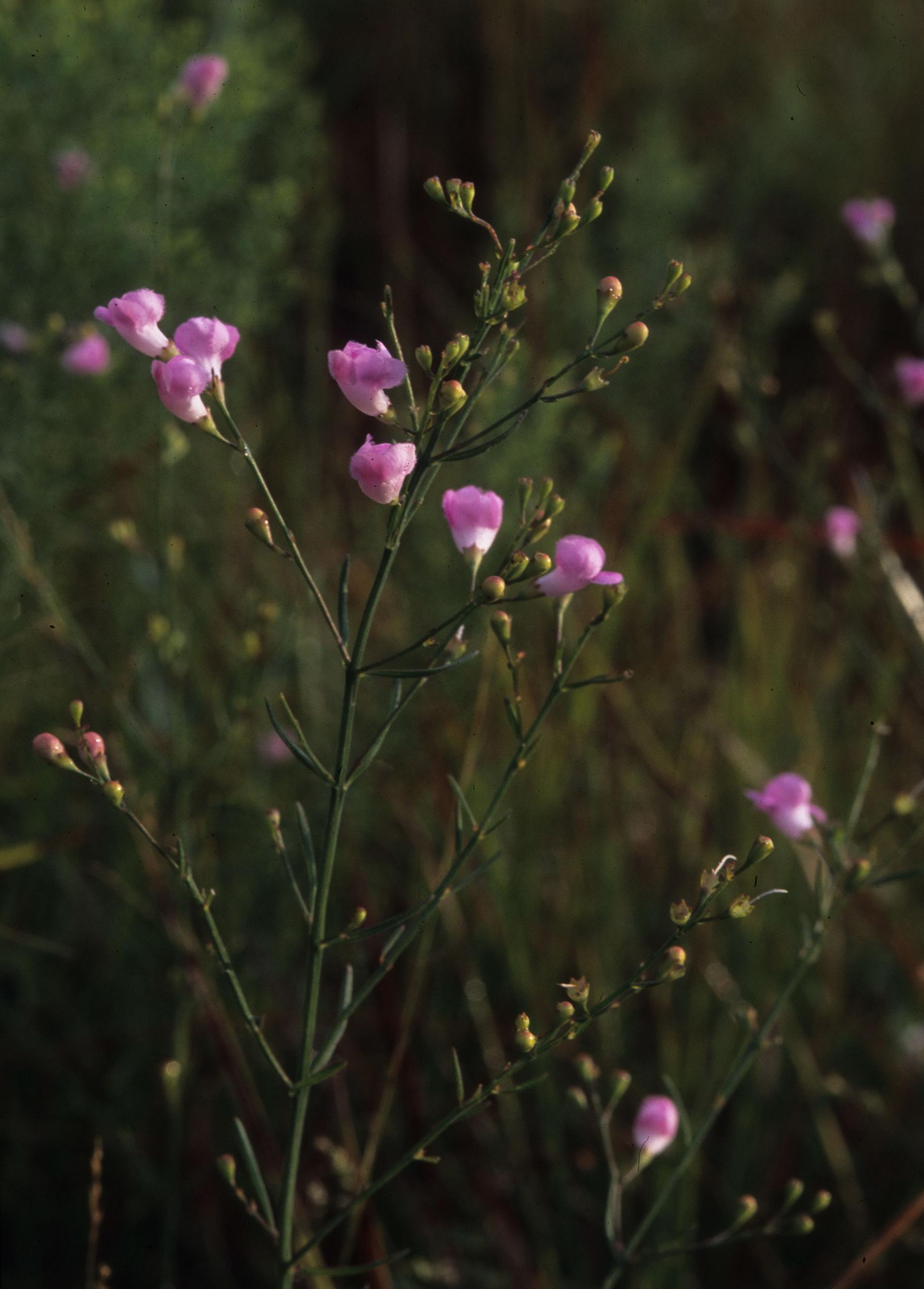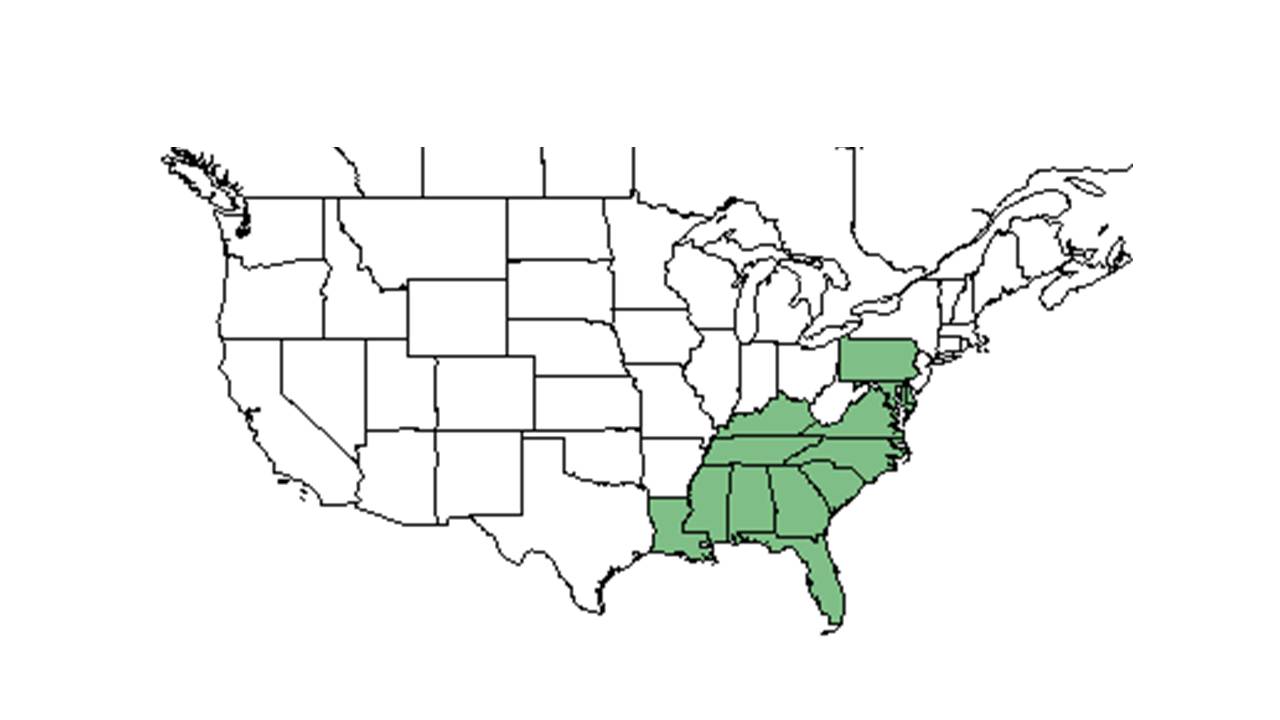Agalinis obtusifolia
| Agalinis obtusifolia | |
|---|---|

| |
| Photo was taken by Gil Nelson | |
| Scientific classification | |
| Kingdom: | Plantae |
| Division: | Magnoliophyta - Flowering plants |
| Class: | Magnoliopsida - Dicotyledons |
| Order: | Scrophulariales |
| Family: | Scrophulariaceae |
| Genus: | Agalinis |
| Species: | A. obtusifolia |
| Binomial name | |
| Agalinis obtusifolia Raf. | |

| |
| Natural range of Agalinis obtusifolia from USDA NRCS Plants Database. | |
Contents
Description
Common names: Tenlobe False Foxglove (Wunderlin and Hansen 2003).
Synonym names: A. erecta Pennell, misapplied; A. keyensis Pennell; A. parviflora (Benth.) Small; A. tenella Pennell; Gerardia obstusifolia (Raf.) Pennell; Gerardia parviflora (Benth.) Champ.; and Gerardia tenella Pennell (Wunderlin and Hansen 2003).
Annual, 30-80 cm tall; stems parallel-grooved; leaves 1-1.5 cm long, mostly opposite; petals 1-1.5 cm long, purple to pink, capsules to 3 mm long. Flowers summer to fall. (Hall 1993). Plant pale to yellowish green, not discoloring in drying (Godfrey 1981).
Distribution
Infrequent in all of Florida. Found from: west to Mississippi and north to Pennsylvania (Hall 1993). Chiefly coastal plain, from Delaware to the Florida Keys, westward to southeastern Louisiana (Godfrey 1981).
Ecology
Habitat
It occurs in frequently burned upland pine communities (Ultisols), flatwoods (Spodosols), and wet meadows, savannas, and seepage slopes (pitcher plant bogs) including peaty areas (Histosols). It is also occurs on shallow calcareous soils of limestone glades of northern Florida and oolitic limerock of slash pine rocklands in sothern Florida (FSU Herbarium). It occurs in primarily high light areas maintained by fire or edaphic conditions but also partial shade adjacent to open areas (FSU Herbarium). It is tolerant of competition with dense grass and often occurs in conjuction in areas dominated by bunch grasses and sedges (FSU Herbarium). It seems to be limited to native pine and wet prairie communities with minimal soil disturbance, although it can occur on roadsides (FSU Herbarium). Pine savannas, flatwoods, and bog margins (Wunderlin and Hansen 2003). Seasonally wet pine savannas and flatwoods, hillside bogs in pinelands, in shallow soil on oolitic limestone in pinelands (Godfrey 1981).
Phenology
Seed dispersal
Seed bank and germination
Fire ecology
Pollination
Use by animals
Diseases and parasites
Conservation and Management
Cultivation and restoration
Photo Gallery
References and notes
FSU herbarium herbarium.bio.fsu.edu